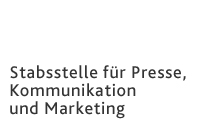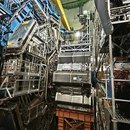Executive Department for
Press, Communication and Marketing
Adolf-Reichwein-Straße 2a Gebäude AVZ (Gebäudeteil AR-NA) 57068 Siegen
Phone: +49 (0)271/740-4915 Fax.: +49 (0)271/740-4911 E-Mail: presse@uni-siegen.de
University of Siegen Involved in ATLAS Upgrade
Particle physicists at the University of Siegen have long been involved with the ATLAS experiment at CERN in Geneva. Now the ATLAS detector is on the cusp of a major upgrade that should increase the chances for fascinating future discoveries.
What is the universe made of? Why do particles have mass? And what is the role of dark matter? These are just a few of the questions occupying the more than 3,000 researchers from 38 countries at the ATLAS experiment — one of four large-scale experiments at the European Organization for Nuclear Research (CERN) in Geneva, Switzerland. Teams of researchers work together to operate a gigantic device capable of detecting elemental particles created in the aftermath of proton collisions caused by the particle accelerator known as the “Large Hadron Collider.” The University of Siegen, together with 15 other German institutions, is an active participant in the experiment, which is now heading into an exciting new phase: an extensive upgrade of the ATLAS detectors by 2026. That means extra preparations for the Siegen physicists as well.
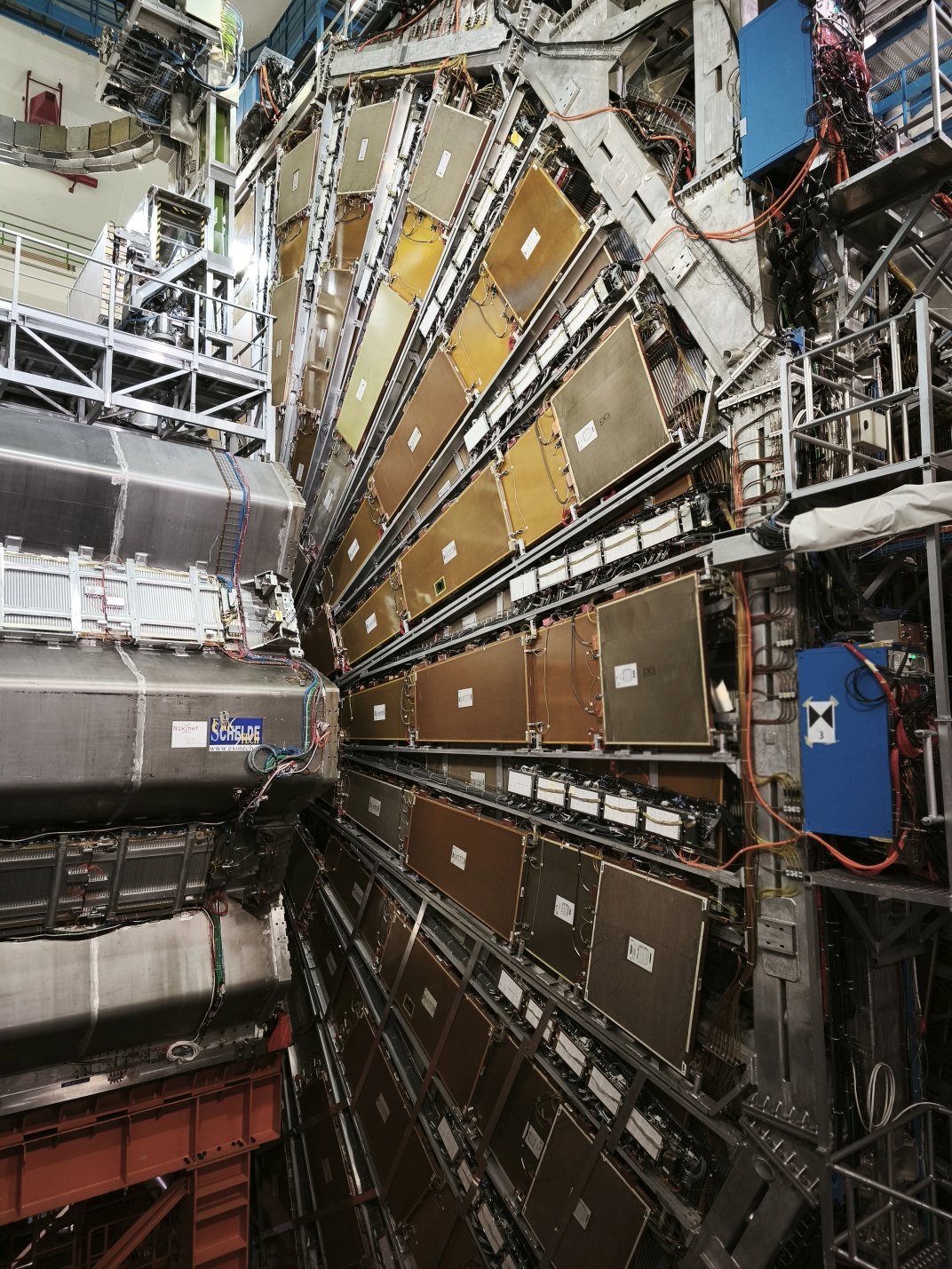 “The achievements in fundamental research at CERN and, in particular, within the ATLAS experiment are remarkable. Fundamental discoveries have already been made and we are hopeful for even more to come. It is fantastic that the University of Siegen is part of this large-scale project,” University Rector Professor Dr. Stefanie Reese declared during an on-site visit to CERN. She and Professor Andreas Kolb, prorector for research, infrastructure, and networking, came on the invitation of Professor Markus Cristinziani, director of Siegen's working group for experimental particle physics. The visit was intended to provide the university’s administration with a better understanding of the work its physicists were performing.
“The achievements in fundamental research at CERN and, in particular, within the ATLAS experiment are remarkable. Fundamental discoveries have already been made and we are hopeful for even more to come. It is fantastic that the University of Siegen is part of this large-scale project,” University Rector Professor Dr. Stefanie Reese declared during an on-site visit to CERN. She and Professor Andreas Kolb, prorector for research, infrastructure, and networking, came on the invitation of Professor Markus Cristinziani, director of Siegen's working group for experimental particle physics. The visit was intended to provide the university’s administration with a better understanding of the work its physicists were performing.
The ATLAS detector is located roughly 100 meters underground and is around half the size of the Notre Dame cathedral in Paris: A colossus of iron and steel, packed with highly complex detectors. Its defining feature is a ring-shaped magnet system with eight large magnetic coils. The centerpiece is the pixel detector, an extremely high-resolution camera. “The pixel detector takes 40 million photos per second,” Professor Cristinziani explains. The detector can pick up elementary particles that only exist for fractions of a second before they decay. In 2012, the ATLAS detector successfully documented the Higgs particle, which had been theorized since 1964. But there is more work to do and a precise measurements of the particle's properties remains one of the research focuses of the experiment.
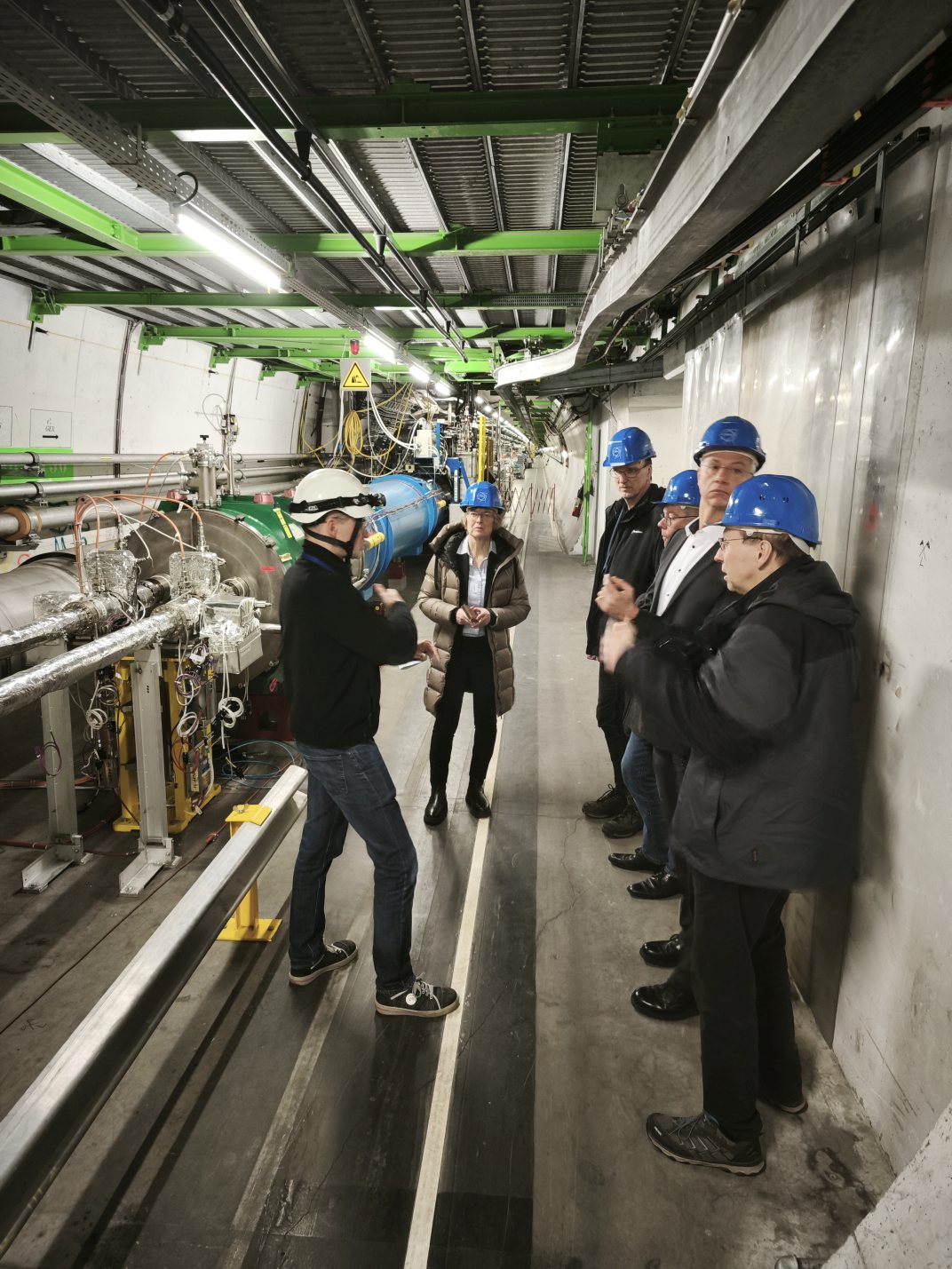 The upcoming detector upgrade promises physicists many new analytical opportunities. The Large Hadron Collider, the world’s most powerful particle accelerator, will also undergo a technical upgrade in late 2026. If everything runs as planned, the modernized LHC will resume operations in 2030, commencing its so-called “High Luminosity Phase.” The collider will produce ten times more proton collisions per second in the detectors than it currently does. That will significantly increase the chances that we’ll make exciting breakthroughs,” Cristinziani says in anticipation. To accommodate this higher luminosity, the ATLAS pixel detector will need to be retrofitted with new electronics. Roughly 300 modules are currently being produced in the clean room on Siegen's Emmy Noether campus. After comprehensive testing by Siegen physicists, the modules will then be installed in the detector in two years.
The upcoming detector upgrade promises physicists many new analytical opportunities. The Large Hadron Collider, the world’s most powerful particle accelerator, will also undergo a technical upgrade in late 2026. If everything runs as planned, the modernized LHC will resume operations in 2030, commencing its so-called “High Luminosity Phase.” The collider will produce ten times more proton collisions per second in the detectors than it currently does. That will significantly increase the chances that we’ll make exciting breakthroughs,” Cristinziani says in anticipation. To accommodate this higher luminosity, the ATLAS pixel detector will need to be retrofitted with new electronics. Roughly 300 modules are currently being produced in the clean room on Siegen's Emmy Noether campus. After comprehensive testing by Siegen physicists, the modules will then be installed in the detector in two years.
The Siegen working group's responsibilities do not end with the delivery of custom electronics for the ATLAS detector. It is also involved in analyzing data collected through the experiment. The team is considered an international leader in the area of top quark physics. The top quark is a massive elementary particle that nevertheless decays within a fraction of a second into a smaller particles. “One of the questions we’re pursuing is whether a top quark can decay into a novel particle that we’ve never observed before. If we presume that dark matter has a particle character, then these hypothetical particles could help explain the nature of dark matter,” Cristinziani says.
The Siegen physicists aim to significantly expand their research in the area of particle physics in the coming years. They are participating in national and state excellence initiatives with the universities of Bonn and Dortmund, as well as Forschungszentrum Jülich. "Color Meets Flavor" is the name of a joint excellence cluster that has reached the final round of the most important German research competition. The cluster will learn in May if it has been selected. “The mere fact that the application has made it into the final selection round speaks to the outstanding quality of our research into particle physics. If the excellence cluster is approved, it would be a significant achievement for the entire university," Rector Reese says.
Background:
Funding for Siegen's ATLAS projects is provided by the Federal Ministry of Education and Research (BMBF) as part of the "Highest-Energy Physics at the Large Hadron Collider" research focus. The BMBF is providing 2.1 million euros in funding for the work of Siegen physicists on the ATLAS experiment during the current grant period.
Contact:
Professor Markus Cristinziani
Tel.: +49 271 740-3629
Email: Markus.Cristinziani@uni-siegen.de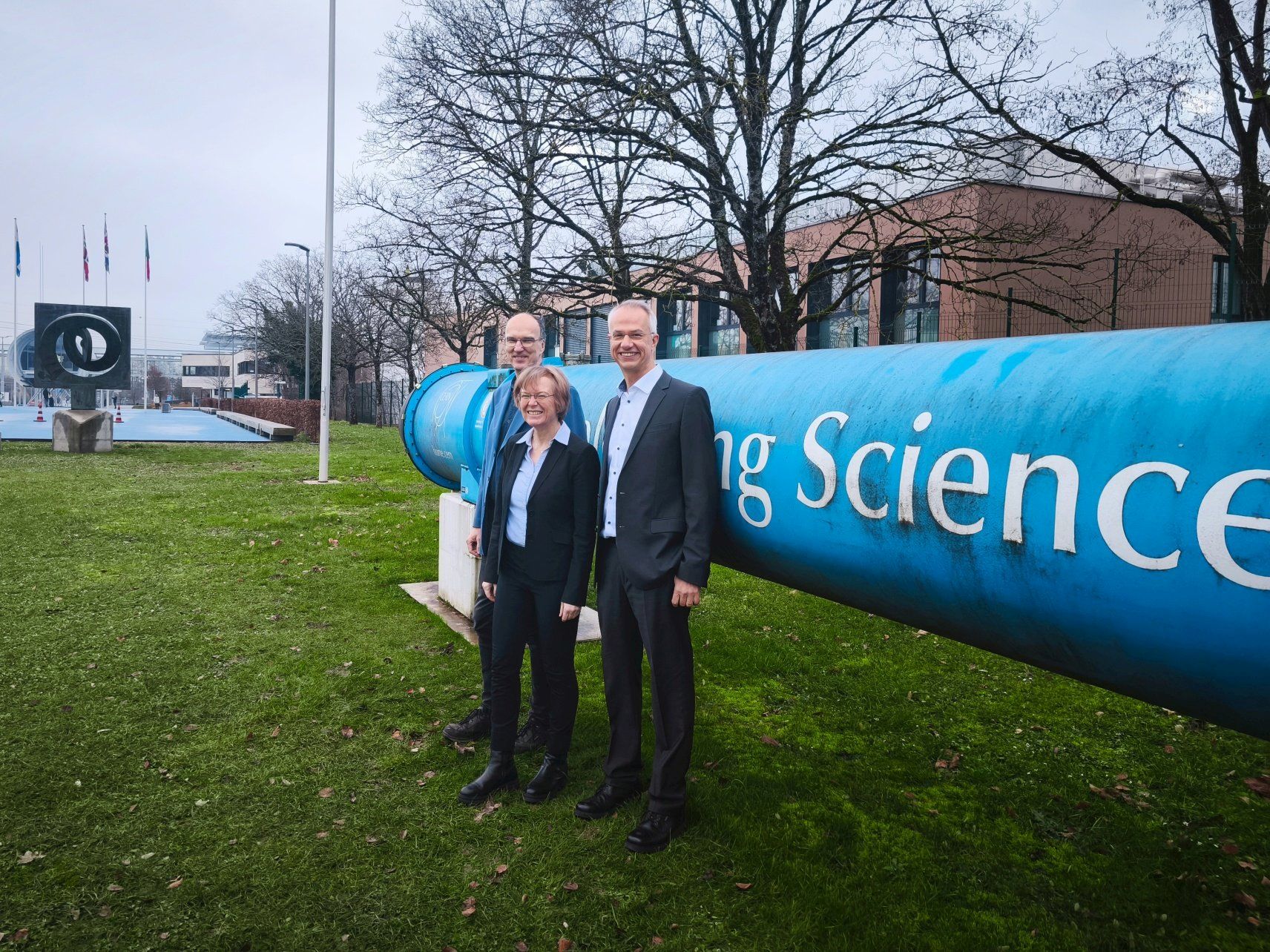
Rector Prof. Dr. Stefanie Reese and the prorector for research, infrastructure, and networking, Professor Andreas Kolb (left) joined Professor Markus Cristinziani for a tour of the ATLAS experiment at CERN in Geneva.
